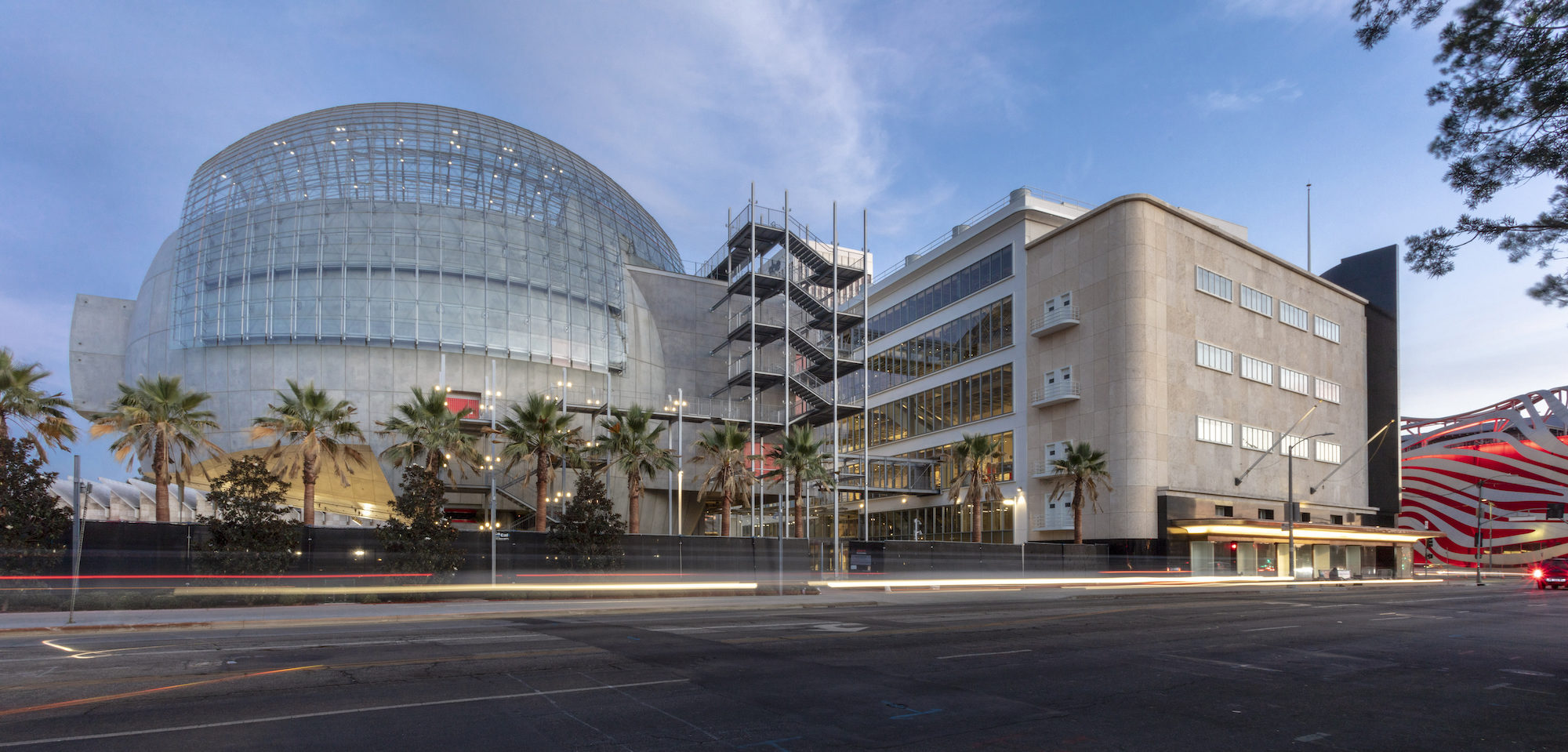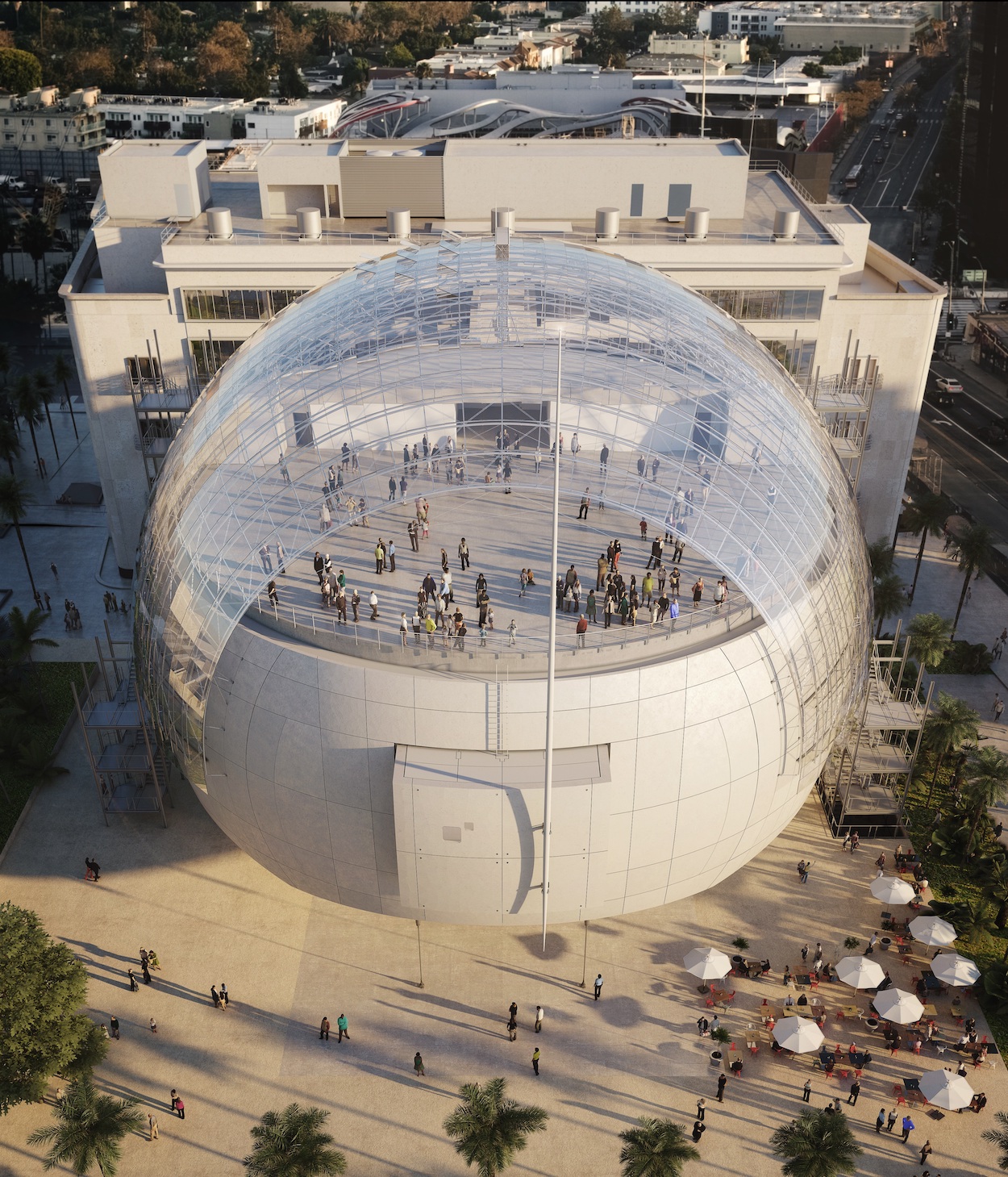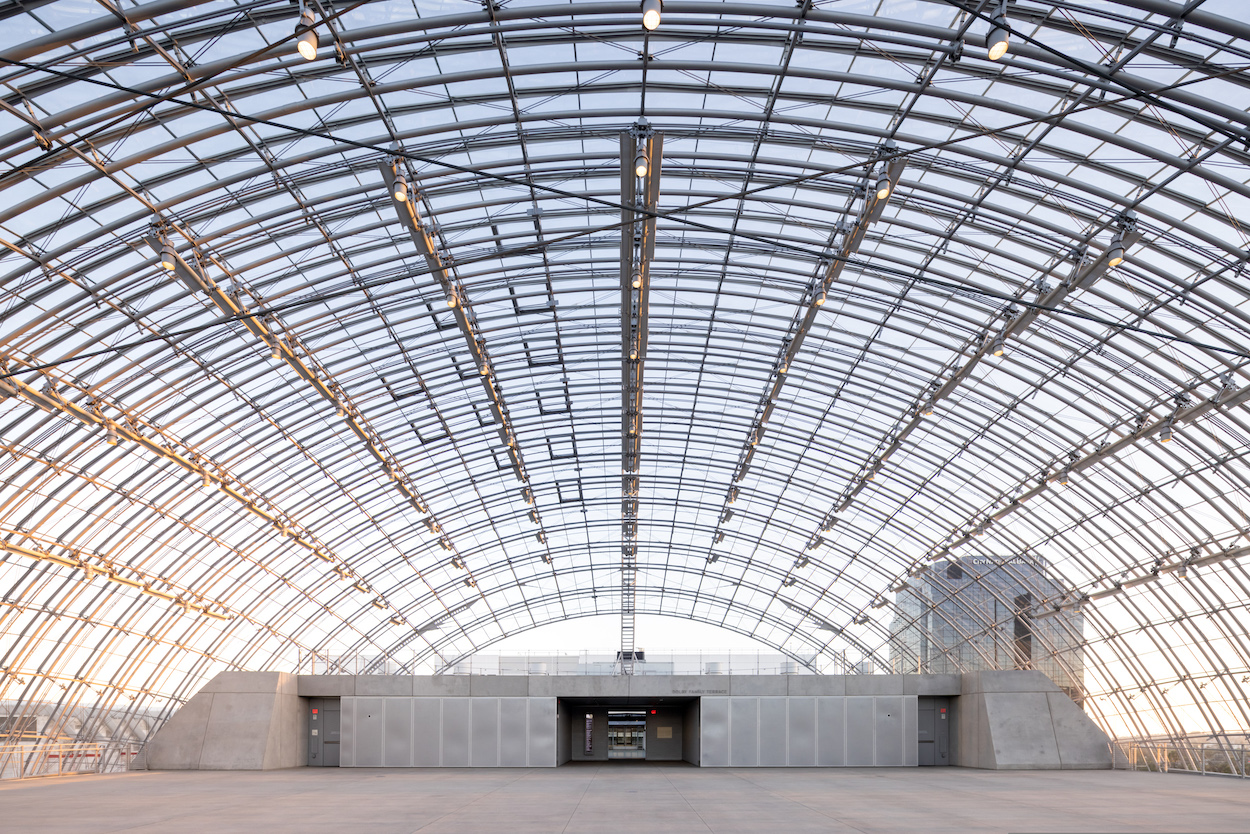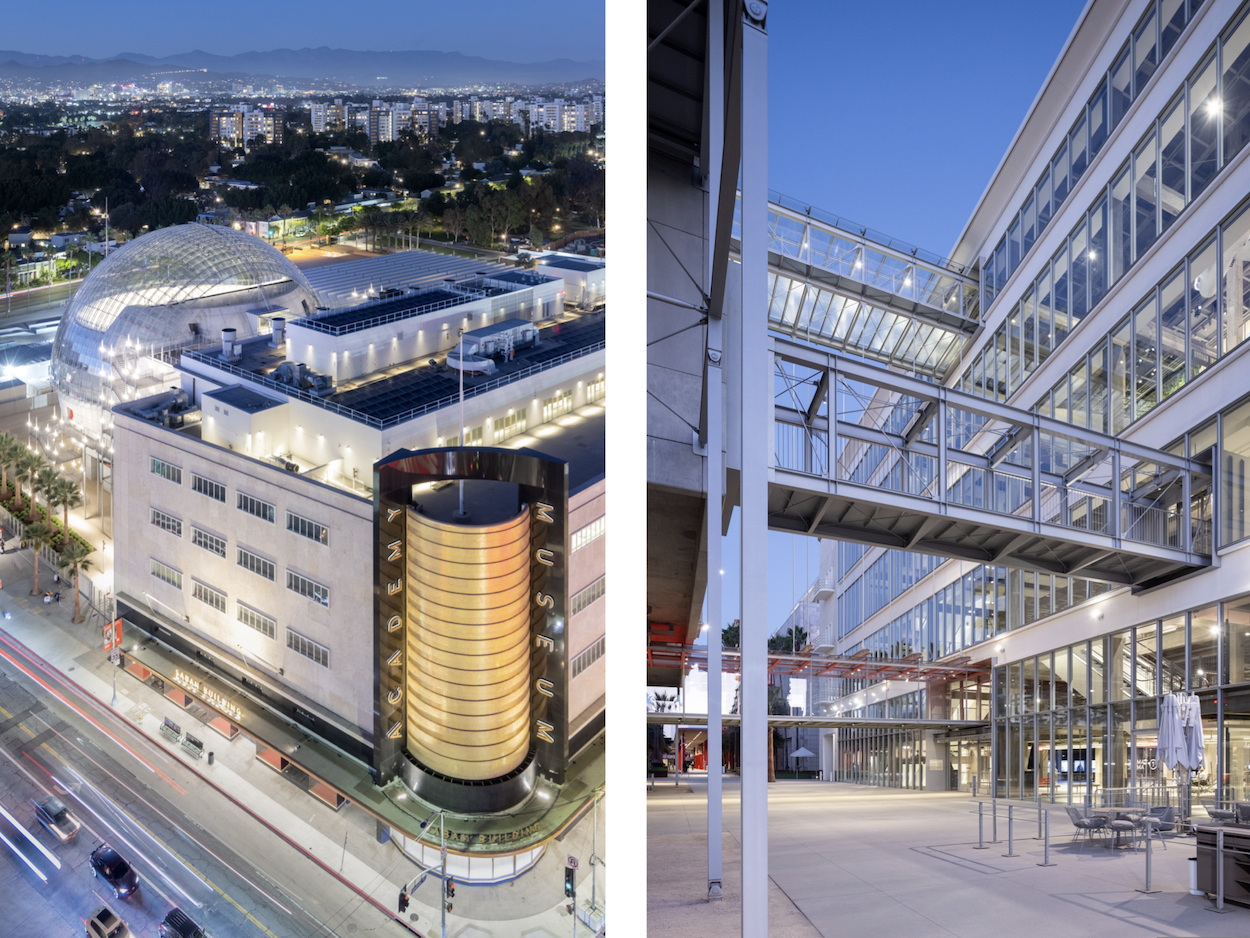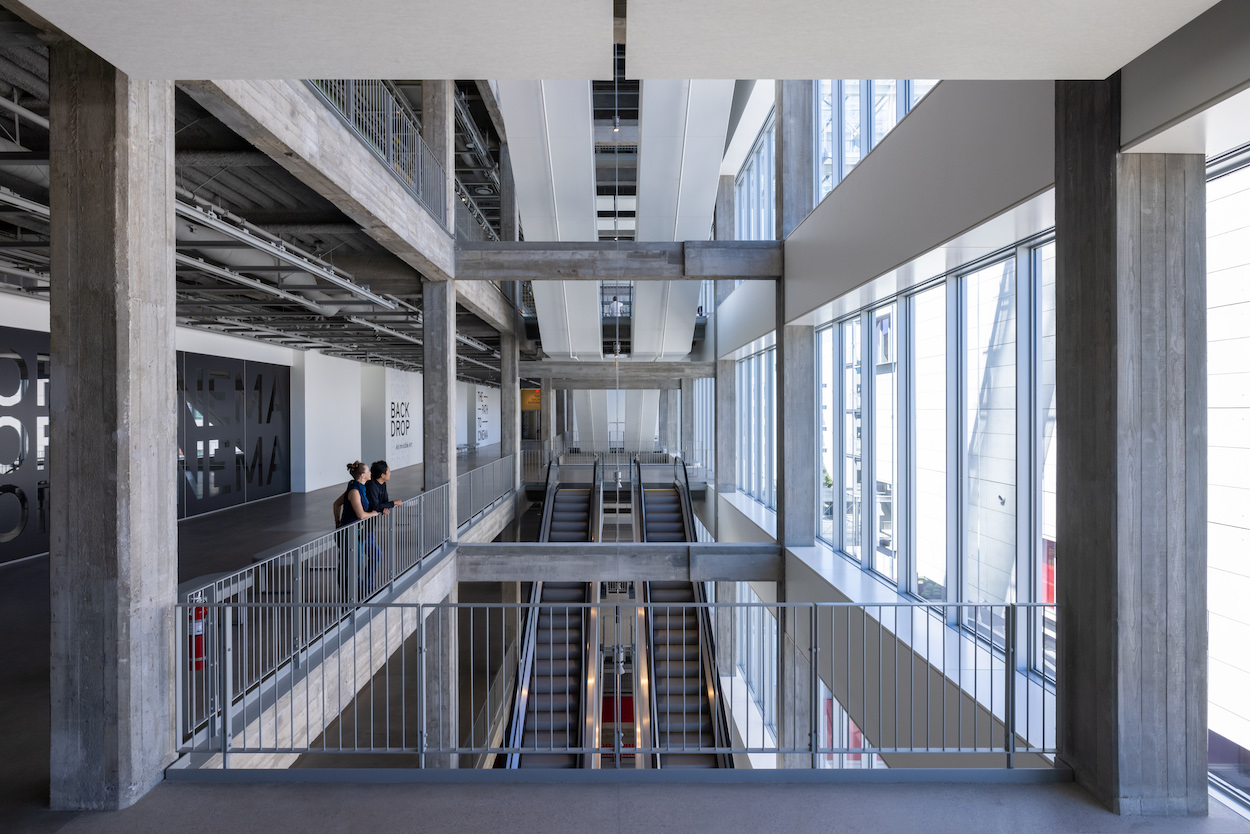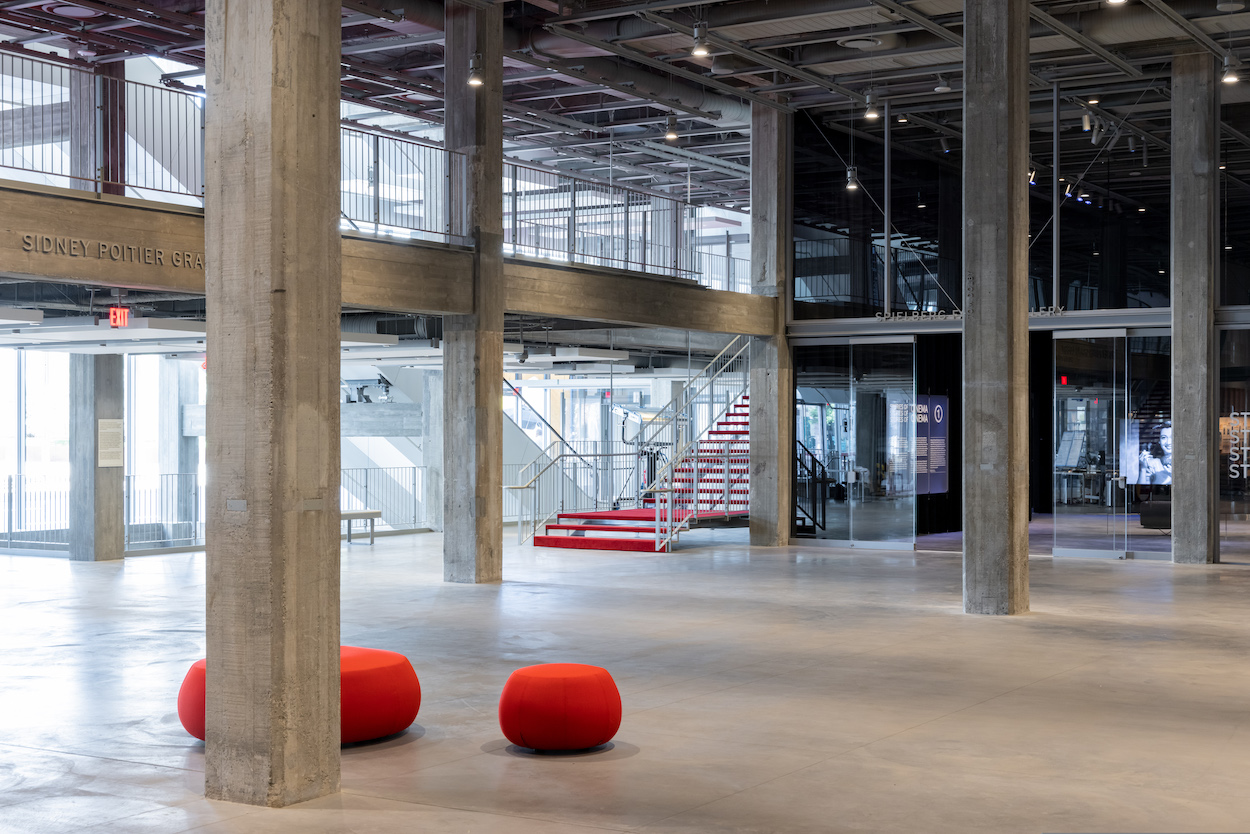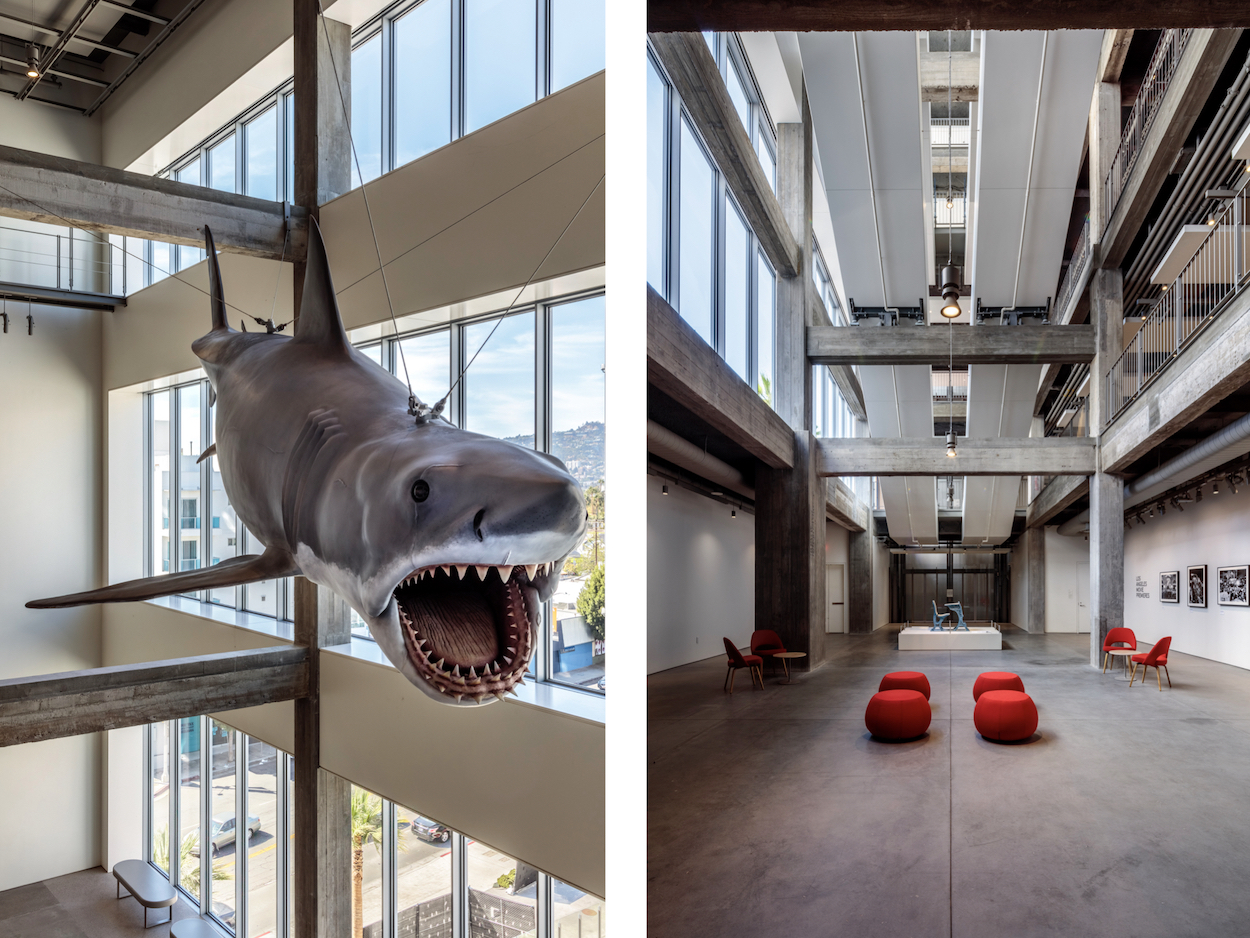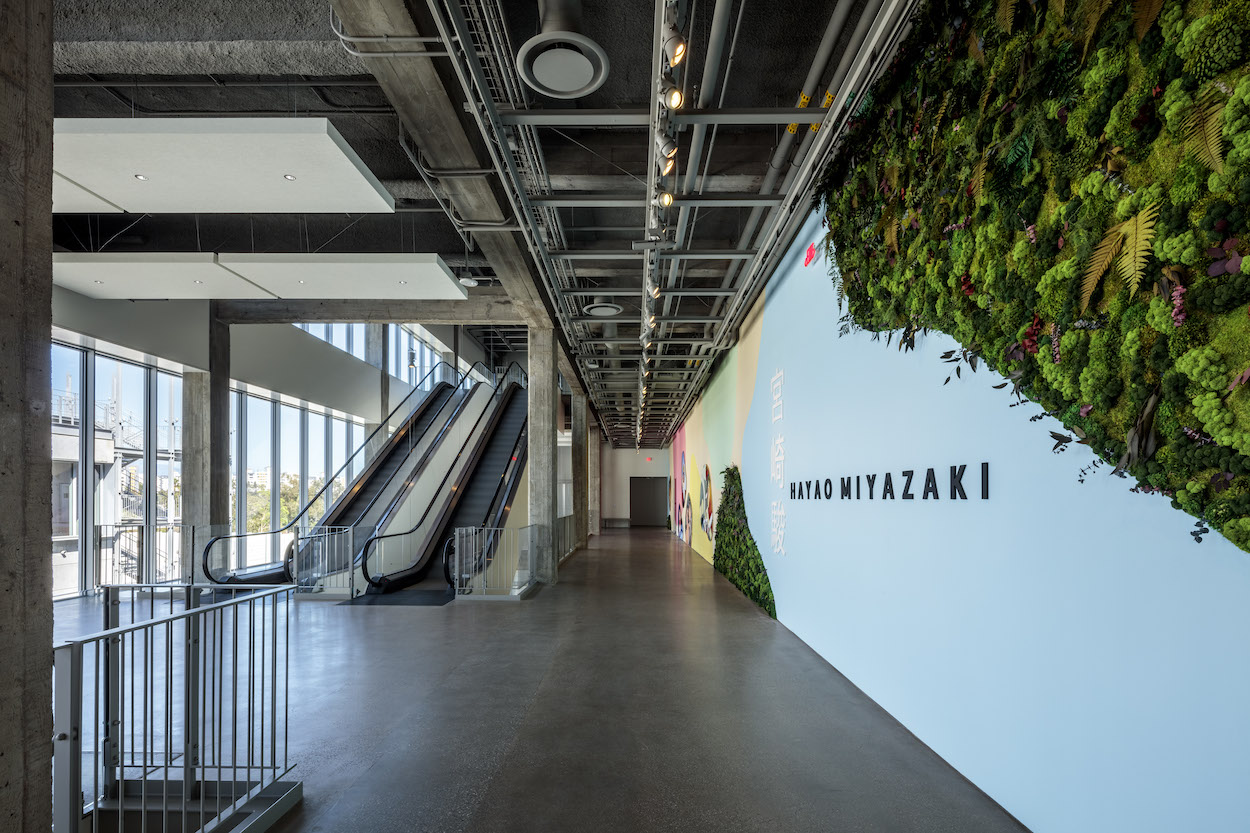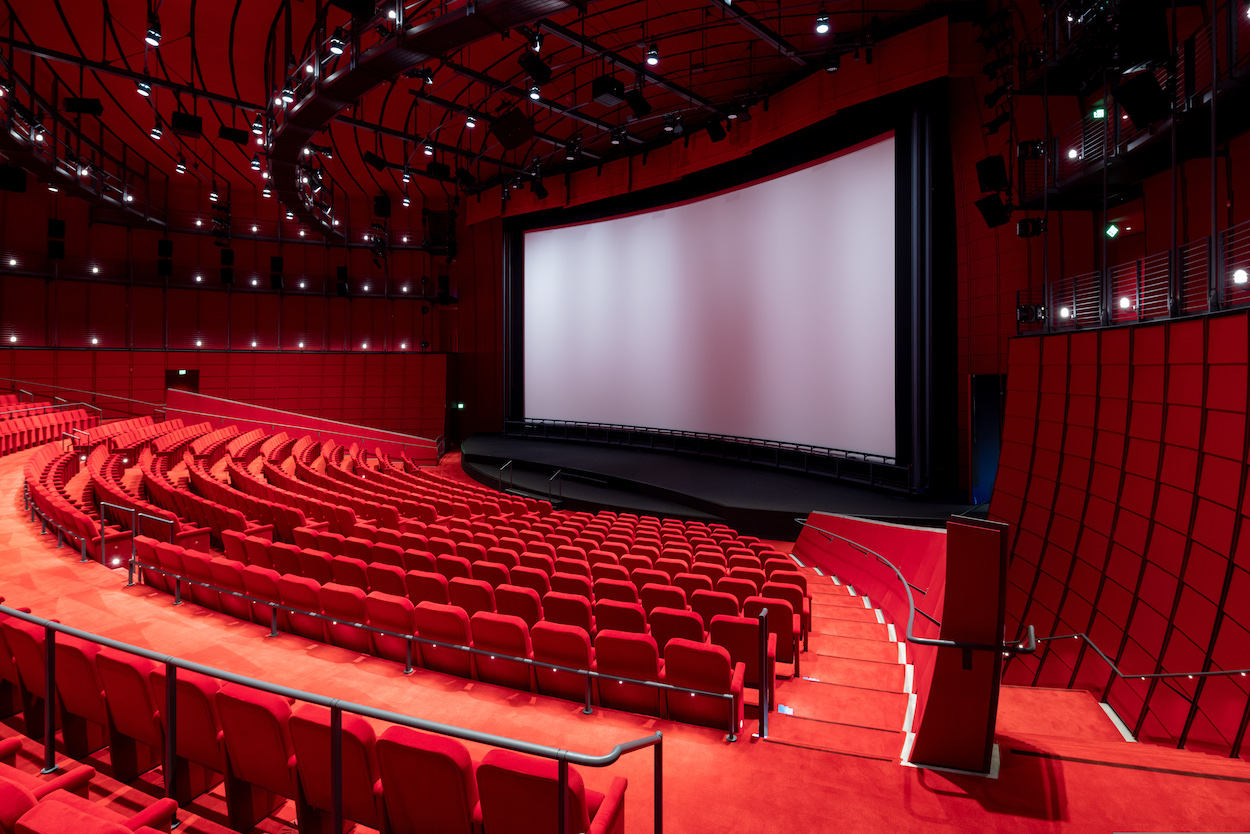Almost one decade ago, it was announced that work had begun on the Academy Museum of Motion Pictures. Slated to become the largest institution in the U.S. devoted to filmmaking, the museum promised immersive, dynamic programming that illuminates the infinite stories of cinema—their art, technology, artists, history and social impact, even when critical or uncomfortable. The project, located a stone’s throw from LACMA and the Petersen Automotive Museum along the city’s famed Miracle Mile, ended up facing a number of setbacks. Financing problems, construction delays, and the pandemic continually pushed back the museum’s opening date to September 30.
The museum sits inside the former May Company department store, a 1939 Streamline Moderne structure newly christened the Saban Building. The Motion Academy enlisted the Italian architect Renzo Piano to preserve and breathe new life into the aging building, which is marked by a distinctive golden cylinder on its facade. “The Academy Museum gives us the opportunity to honor the past while creating a building for the future—in fact, for the possibility of many futures,” Piano said in a statement. “The historic Saban Building is a wonderful example of Streamline Moderne style, which preserves the way people envisioned the future in 1939.” To start, he replaced 35 percent of the cylinder’s 350,000 gold leaf mosaic tiles from the original manufacturer in Italy. Other interventions include restoring the facade with Texas limestone and completing a series of interior renovations that create space for a shop, restaurant, and 50,000 square feet of gallery space designed in collaboration with local firm wHY Architecture.
That journey into the future, so to speak, materializes when visitors cross two elevated walkways into a giant glass-and-concrete spherical building next door. The structure, perhaps unimaginatively called the Sphere and resembling a giant snowglobe, will house screening theaters topped by a spacious terrace sheltered under a curving glass roof. Besides offering views of the Hollywood Hills, the 45,000-square-foot dome houses a 1,000-seat blood-red theater that will host major film screenings. “The Sphere Building is a form that seems to lift off the ground into the perpetual, imaginary voyage through space and time that is moviegoing,” says Piano, fully aware of the structure’s sci-fi influences. “By connecting these two experiences, we create something that is itself like a movie. You go from sequence to sequence, from the exhibition galleries to the film theater and the terrace, with everything blending into one experience.”
